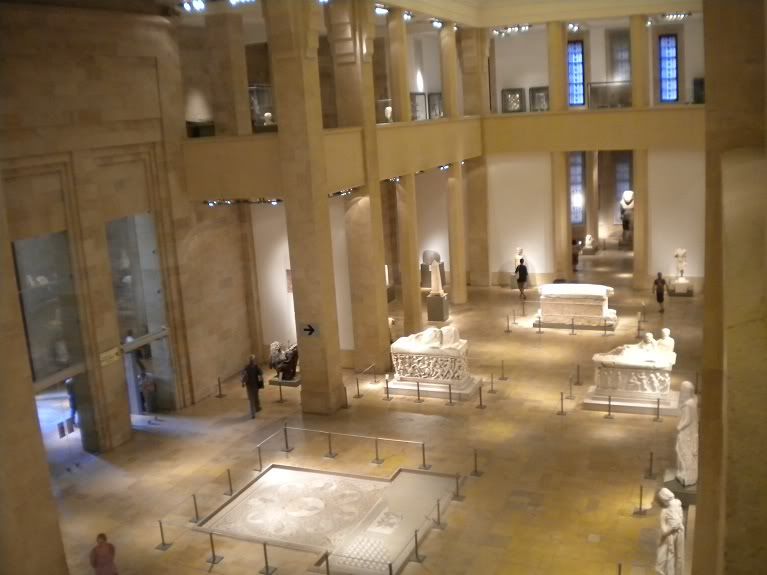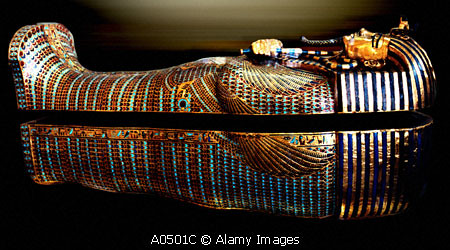 Yesterday our group finally made it downtown to see the National Museum of Beirut. As the key museum of archeology in all of Lebanon, our group thought it best to make a point to see it before we left and I have to say that it was well worth the trip.
Yesterday our group finally made it downtown to see the National Museum of Beirut. As the key museum of archeology in all of Lebanon, our group thought it best to make a point to see it before we left and I have to say that it was well worth the trip.
The museum was only two stories; the third floor was currently under renovation but it hosted a certain aura of grandeur that demanded our respect regardless of its size. In comparison to, say the Smithsonian Museums in Washington DC, this museum held very few artifacts. I had respect for this museum; as I do with with most but this was different. I’ve seen many museums throughout the United States and throughout the world, but I particularly liked this one because of its simplistic displays and easy navigation. But in retrospect, I would much rather spend an hour or two in the National Museum taking the time to read all of the signs and awe at the “few” (only 1,300 objects of its 100,000 collection) ancient artifacts than breezing through the 100s of clusters of exhibits in the Smithsonian in fear that I may not get to see all of it in one day.
The National Museum definitely had a good mix of artifacts both big (sarcophagi, mosaics) and small (jewelry, weapons). I think my favorite floor of the two was the first floor that had all of the larger stone artifacts such as statues and thrones. My favorite statue, Colossus, was in the Egyptian-inspired section:
The upper floor housed the smaller artifacts. I really liked a lot of the jewelry, figurines and other small objects archeologists have discovered within the borders of Lebanon over the years.
For more pictures of the National Museum – as well as pictures of Moukhtara Palace, home of Walid Jumblatt – click HERE.
Before we left the second floor of the museum, one of my classmates pointed out a very interesting display that required I take a second look. Inside the small glass case appeared to bit bits and pieces of different artifacts sloppily fused together; these were some of the artifacts that were damaged during the Lebanese Civil War. After further investigation, I learned that the National Museum lay on the actual line that divided the waring factions – called Museum Ally – and was actually very badly damaged during the war. Many of the artifacts had to be removed, while the heavier ones were eventually encased in wood and concrete to protect them from the shelling and bombing happening around the museum. In 1991 after the Civil War, the restoration of the museum was headed by the Ministry of Culture and Higher Education.
Currently collection on the floor is only about 1,300 objects as mentioned above. However, the museum is divided neatly into the following sections: Prehistory, Bronze Age, Iron Age, Hellenistic Period, Roman Period, Byzantine Period and the Arab Conquests. I like my museums to have a bit of organization so I really enjoyed being able to “step” through history. The basement is scheduled to open up in November of 2010.
I am very glad that we took the time to get to see the museum and I’ve always had deep respect for those who wish to preserve the past. I also think that the National Museum is a symbol of the nationalism that Lebanon strives today to achieve. Even the rhetoric used on the signs in the museum conveys a sense of nationalism, a wanting to be united as one Lebanon despite the current political situation. I will admit that it has been very difficult for me to wrap my head around the idea that Lebanon has a future as, well, one Lebanon, as a unified state where the people are more proud to be Lebanese than Christian or Muslim or Druze. And I think the museum is a good way to see that even from different pasts – as most countries come together from – Lebanon can still be united now and for the future.
IN OTHER FASCINATING MIDDLE EASTERN NEWS…
It has recently been discovered in my own dorm room that present-day Egyptians are still connected so deeply to their ancient Pharaoh roots that they tend to sleep like this…
Look familiar?
**Thank you to my beautiful and wonderful Egyptian roommate, Noha, for being such a great sport about this post. ![]()



No comments:
Post a Comment